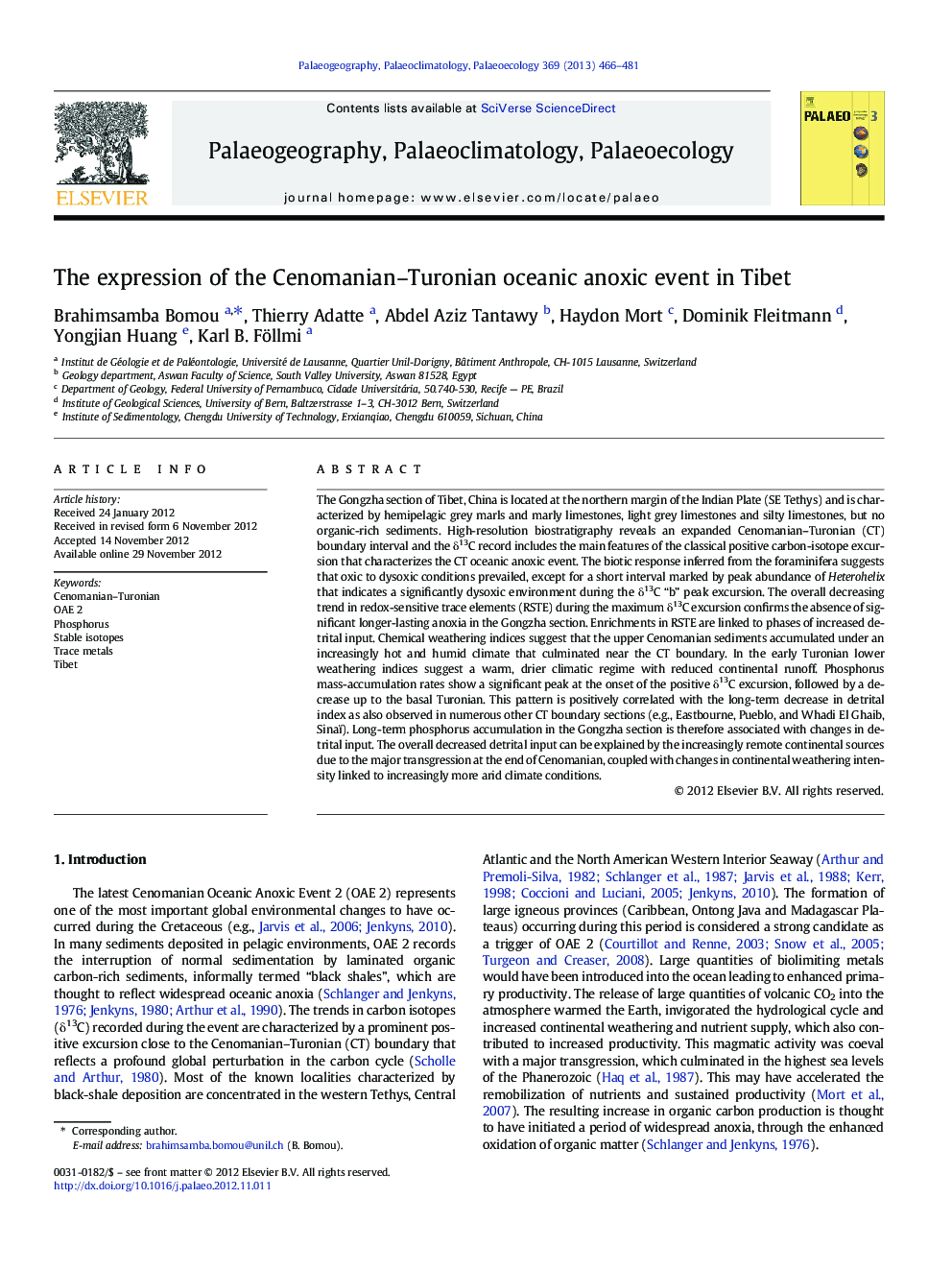| کد مقاله | کد نشریه | سال انتشار | مقاله انگلیسی | نسخه تمام متن |
|---|---|---|---|---|
| 4466717 | 1622217 | 2013 | 16 صفحه PDF | دانلود رایگان |

The Gongzha section of Tibet, China is located at the northern margin of the Indian Plate (SE Tethys) and is characterized by hemipelagic grey marls and marly limestones, light grey limestones and silty limestones, but no organic-rich sediments. High-resolution biostratigraphy reveals an expanded Cenomanian–Turonian (CT) boundary interval and the δ13C record includes the main features of the classical positive carbon-isotope excursion that characterizes the CT oceanic anoxic event. The biotic response inferred from the foraminifera suggests that oxic to dysoxic conditions prevailed, except for a short interval marked by peak abundance of Heterohelix that indicates a significantly dysoxic environment during the δ13C “b” peak excursion. The overall decreasing trend in redox-sensitive trace elements (RSTE) during the maximum δ13C excursion confirms the absence of significant longer-lasting anoxia in the Gongzha section. Enrichments in RSTE are linked to phases of increased detrital input. Chemical weathering indices suggest that the upper Cenomanian sediments accumulated under an increasingly hot and humid climate that culminated near the CT boundary. In the early Turonian lower weathering indices suggest a warm, drier climatic regime with reduced continental runoff. Phosphorus mass-accumulation rates show a significant peak at the onset of the positive δ13C excursion, followed by a decrease up to the basal Turonian. This pattern is positively correlated with the long-term decrease in detrital index as also observed in numerous other CT boundary sections (e.g., Eastbourne, Pueblo, and Whadi El Ghaib, Sinaï). Long-term phosphorus accumulation in the Gongzha section is therefore associated with changes in detrital input. The overall decreased detrital input can be explained by the increasingly remote continental sources due to the major transgression at the end of Cenomanian, coupled with changes in continental weathering intensity linked to increasingly more arid climate conditions.
► No strong anoxia prevailed during the CT interval at Gongzha, Tibet.
► CIA values suggest that climate change from hot and humid to drier conditions.
► P accumulation during most of OAE is primarily linked to changes in detrital input.
► Both eustatic/climatic and productivity/anoxic processes control P accumulation.
► Regardless the redox conditions, both models generate the same P trend.
Journal: Palaeogeography, Palaeoclimatology, Palaeoecology - Volume 369, 1 January 2013, Pages 466–481